Reviews
Cléo de 5 à 7
Agnès Varda
France / Italy, 1962
Credits
Review by Jenny Jediny
Posted on 20 July 2010
Source Mubi.com streaming video
Categories Viva Varda: The Films of Agnès Varda
Actually, Cléo de 5 à 6:30. We’ll cut to black before the last thirty minutes referenced in the title, leaving Cléo’s fate open to both her interpretation and ours. Cléo de 5 à 7 is obsessed with time, both with the “real time” countdown appearing periodically as onscreen text, and the omnipresence of mortality, as Cléo awaits the results of a medical examination. Just as it is aware of time ticking away, Agnès Varda’s film worships the present, leaving a lasting impression of not merely how precious minutes, a month, a decade can be, but how consciousness of the present can help carve out a path to happiness.
Opening with a visit to a fortune teller, the film presents a brief moment - a mere thirteen chapters - in Cléo Victoire’s life. A prelude brings us up to speed: tarot cards appear to reveal that the unknown results of Cléo’s cancer test will prove fatal (“I saw death,” hisses the gypsy to her companion after convincing a tearful Cléo to leave without frightening the other customers). While the prediction weighs heavily on the exiting woman’s mind, the film stock has switched from color to b&w, signaling other imminent changes in Cléo’s life. As the fortune teller states, the revelation of the Death card can imply a transformation outside of the body; Varda’s depiction of Cléo’s journey embraces this interpretation, of a shift in the soul that will cause the woman to shed her superficial outlook.
In contrast to her subject’s inability to gaze outward and engage with her surroundings, Varda’s camera is continuously roving, always observing. The blur of fiction and reality would become a common theme in Varda’s work, and much of Cléo de 5 à 7 is a vérité time capsule of 60s Parisian street life. The present-tense city captured in this imagery is in jarring opposition to Cléo’s pampered lifestyle: a pop singer kept by her wealthy lover in an all-white, luxury flat complete with a swing and a bevy of kittens, the girl truly seems like a bird let loose from her gilded cage when she hits the gritty streets of Paris. For a time, she exudes only childish fear, her eyes seeing death in frog-swallowing street performers and shop windows cluttered with African masks. But these are signs of superstition, not necessarily omens for Cléo, as Varda provides signs of life intermingled with death.
Cléo’s immersion into reality - her increasing interest in her surroundings, and in looking at herself as something more than an object of beauty - begins with the ceremonial removal of remnants of her former life: a wig, an unneeded fur hat, and even her stage name (she is really Florence, a gentle rebuttal to the dramatic flair of queenly Cléopatra). In her final chapters, she enters the Parc Montsouri and engages in conversation with a sweet soldier also awaiting fate (he is due for return dispatch to Algeria that evening). The brief interlude is tinged with romance but, more poignantly, it allows Cléo a chance to voice her fear, her doubts, and, when faced with the gravity of her situation, to finally connect.
Even within this brief moment of joy, the uncertainty of Cléo’s future is hinted at in her final words: “I think I’m happy.” There is slight doubt in that sentence, perhaps due to the vague answers from her doctor, and in her final gaze before the screen goes black it appears the that life - with all of its happiness and fear - has overwhelmed the young woman. Cléo’s embrace of life may be an unsteady one, but unlike her discarded personae, she now remains open to possibility, and to herself.
More Viva Varda: The Films of Agnès Varda
-
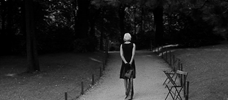
Cléo from 5 to 7
1962 -
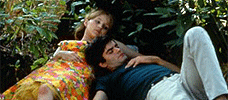
Le Bonheur
1964 -
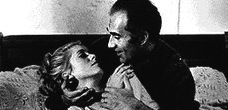
Les Créatures
1966 -
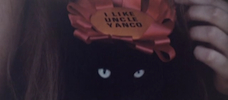
Uncle Yanco
1967 -

Black Panthers
1968 -
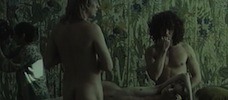
Lions Love
1969 -
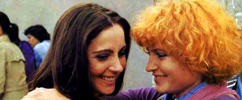
One Sings, the Other Doesn’t
1977 -
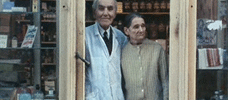
Daguerréotypes
1976 -
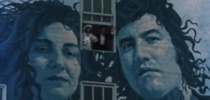
Mur murs
1981 -
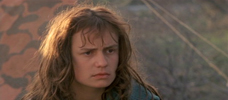
Vagabond
1985 -
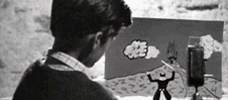
Jacquot de Nantes
1991 -

One Hundred and One Nights of Simon Cinéma
1995 -
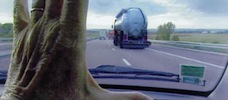
The Gleaners and I
2000 -
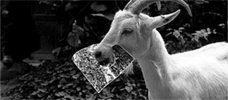
Cinévardaphoto
2004 -
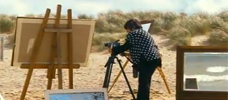
The Beaches of Agnès
2008
We don’t do comments anymore, but you may contact us here or find us on Twitter or Facebook.



